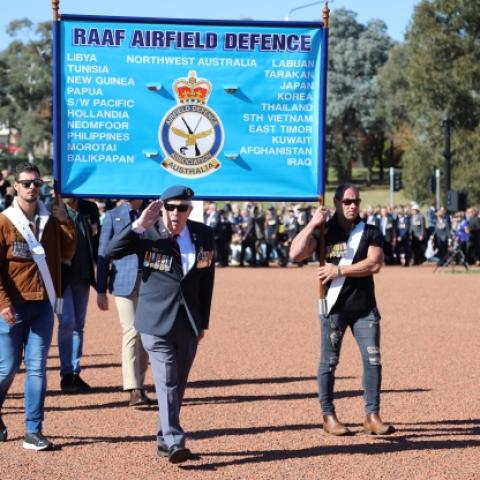While our Australian cricketers are competing at the World Cup in England, we remember when the Sunshine Coast had a rare chance to see international cricketers in action at the Nambour cricket ground.
Alan Falconer Kippax was a cricketer playing for New South Wales and Australia. He was regarded as one of the great stylists of Australian cricket during the era between the two World Wars.
He became a regular in the Australian Cricket team between the 1928-29 and 1932-33 seasons.
Jack Morrison Gregory, another international cricketer, was also part of the team. He played 129 first class matches for New South Wales and 24 international tests between 1920 and 1928.
He was known mainly as a fearsome right-arm fast bowler but he also achieved a batting average of 36.50 and 1146 runs including two centuries, batting left-handed and gloveless.
A Nambour Chronicle report on May 6, 1927 said “history was made in North Coast cricket annals on Monday last, when Mr Alan Kippax’s team visited Nambour. The occasion was noteworthy inasmuch as it is the first time that an interstate team and especially comprising world-famed cricketers, had visited this part of the State.”
Long before the morning passenger train from Gympie arrived, many cars had gathered in Currie Street and crowds had congregated around the station. Special trams even ran from Coolum and Mapleton for the event.
The team were welcomed with a civic reception, Maroochy Shire Council Chairman, Mr JT Lowe the president of the Chamber of Commerce, Mr W Whalley and others extended the welcome on behalf of residents from the Maroochy Shire.
The team was then taken on a tour to Kureelpa for a picturesque view of the area. They also voiced a desire to sample pineapples and a detour was taken to Mr Arthur Harvey’s residence, where the team dined on slices of the delicious fruit.
Play began at 11.30am, by this time a large number of people had paid the two shilling admission fee, and those with cars had chosen a good vantage point on the slope beside the oval.
Considerable interest was shown in the tall, athletic form of Gregory, and his happy disposition appealed to the crowd. The next to excite the minds of the cricket enthusiasts was Alan Kippax, an outstanding international batsman.
The North Coast team won the toss and decided to bat first being all out for 149, JM Gregory got three wickets for 16 runs and took a spectacular catch in slips.
During the New South Wales innings, the crowd started chanting “Gregory! Gregory!” – who was comfortably watching the match from a car.
The crowd went wild when the big hitting bowler strode out to the centre and hit some tremendous drives which had the opposition ducking their heads in every direction.
Kippax delighted the crowd with his exquisite shot making and was greatly applauded.
Close of play came when the crowd struggled to see the ball in the fading light, the visitors finished on six for 184.
That evening, the cricketers were feted at a banquet in the Royal Hotel with a splendid menu prepared by the proprietor, Mrs Perren, followed by a Ball at the Empire Hall.
The figure of a light stepping Mr Jack Gregory could be seen towering over the heads and shoulders of the other dancers.
As seen by the popularity of this event, cricket has long been part of the culture and sporting history on the Sunshine Coast.
In the 1800s, paddocks were used as cricket grounds with pitches cut out of a levelled area of paddock. Players had to deal with the extra hazard of cows grazing in the outfield.
Townsend’s paddock in Burnett Street was one where games were often played in Buderim from the late 1800s.
In 1903 the Moreton Cricket Association was formed. It included teams from Woombye, Nambour, Waratahs and Landsborough. The Chronicle Cricket Club as well as Kenilworth and Eumundi also formed a combined team, to take part.
Other clubs were also forming in other areas of the coast.
A club at Caloundra was formed in 1927 and played their first game on an area referred to as Black Flat, now Tripconey. Later that year a concrete pitch was laid.
Cricket was a serious game and below par performances were noted.





